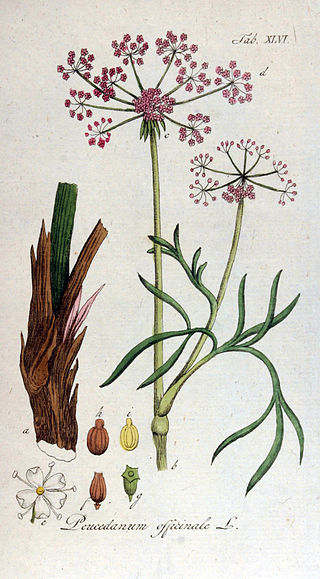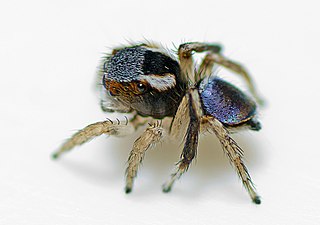
Pentatominae is a subfamily of Pentatomidae, a family of shield bugs. This subfamily is the largest one within the Pentatomidae, having 4937 species classified in 938 genera. Species in this subfamily are phytophages and several of them are considered agricultural pests. Some invasive pentatomines such as Halyomorpha halys and Bagrada hilaris have been considered household pests. Higher systematics of the group have been revised by Rider et al.
The Catalogue of Life is an online database that provides an index of known species of animals, plants, fungi, and microorganisms. It was created in 2001 as a partnership between the global Species 2000 and the American Integrated Taxonomic Information System. The Catalogue is used by research scientists, citizen scientists, educators, and policy makers. The Catalogue is also used by the Biodiversity Heritage Library, the Barcode of Life Data System, Encyclopedia of Life, and the Global Biodiversity Information Facility. The Catalogue currently compiles data from 165 peer-reviewed taxonomic databases that are maintained by specialist institutions around the world. As of September 2022, the COL Checklist lists 2,067,951 of the world's 2.2m extant species known to taxonomists on the planet at present time.

Peucedanum is a genus of flowering plant in the carrot family, Apiaceae.

Paragomphus is a genus of dragonfly in the family Gomphidae. They are commonly known as hooktails.

Zygonyx is a genus of dragonflies in the family Libellulidae. They are commonly known as cascaders because of their preference for living beside waterfalls and flying through the spray. They lay their eggs in wet dangling roots.
The World Register of Marine Species (WoRMS) is a taxonomic database that aims to provide an authoritative and comprehensive list of names of marine organisms.
Odontocraspis is a monotypic moth genus in the family Lasiocampidae first described by Swinhoe in 1894. Its single species, Odontocraspis hasora, described by the same author in the same year, is found from the Khasi Hills of India to the Sunda Islands of Borneo.

Chaerilus is a genus of scorpions in the family Chaerilidae. They live in tropical parts of South Asia and Southeast Asia. A fossil genus Electrochaerilus is known from the Late Cretaceous (Cenomanian) aged Burmese amber.

iNaturalist is an American 501(c)(3) nonprofit social network of naturalists, citizen scientists, and biologists built on the concept of mapping and sharing observations of biodiversity across the globe. iNaturalist may be accessed via its website or from its mobile applications. iNaturalist includes an automated species identification tool, and users further assist each other in identifying organisms from photographs. As of 17 June 2023, iNaturalist users had contributed approximately 161,278,660 observations of plants, animals, fungi, and other organisms worldwide, and around 350,000 users were active in the previous 30 days.
The bicolored swamp snake also known as the striped swamp snake is a species of African venomous snake. It is the type species of the genus Limnophis. Their backs are black with a white underbelly.
Chamus is a genus of Miridae or capsid bugs in the tribe Dicyphini and subtribe Odoniellina. Species can be found in central and southern Africa, with the type C. wealei first described by Distant in 1904.
Garymunida prolixa is a species of squat lobster in the family Munididae. It can be found in the Andaman and Arabian Seas, at depths between about 240 and 750 metres.

Halyomorpha is a genus of shield bugs in the subfamily Pentatominae and tribe Cappaeini, erected by G. Mayr. This genus probably has an Asian centre of origin, but Halyomorpha halys, the brown marmorated stink bug, is an invasive species with a world-wide distribution.
Siphonophora is a genus of millipedes belonging to the family Siphonophoridae.
Sahlbergella is a genus of African bugs in the family Miridae and tribe Dicyphini.
Distantiella is a genus of African bugs, of the family Miridae or "capsids", named after William Lucas Distant. This genus is placed in the subtribe Odoniellina: which has been included in tribes Dicyphini or Monaloniini.

The Phyllocephalinae are a subfamily of shield bugs erected by Amyot and Serville in 1843.

Maratus anomalus or the unusual peacock spider, is a species of peacock spider in the family Salticidae. M. anomalus was described by Karsch in 1878 in Queensland Australia and New South Wales.

The Mictini are a tribe of leaf-footed bugs, in the subfamily Coreinae erected by Amyot & Serville in 1843. Genera are distributed from Africa to South-East Asia.









